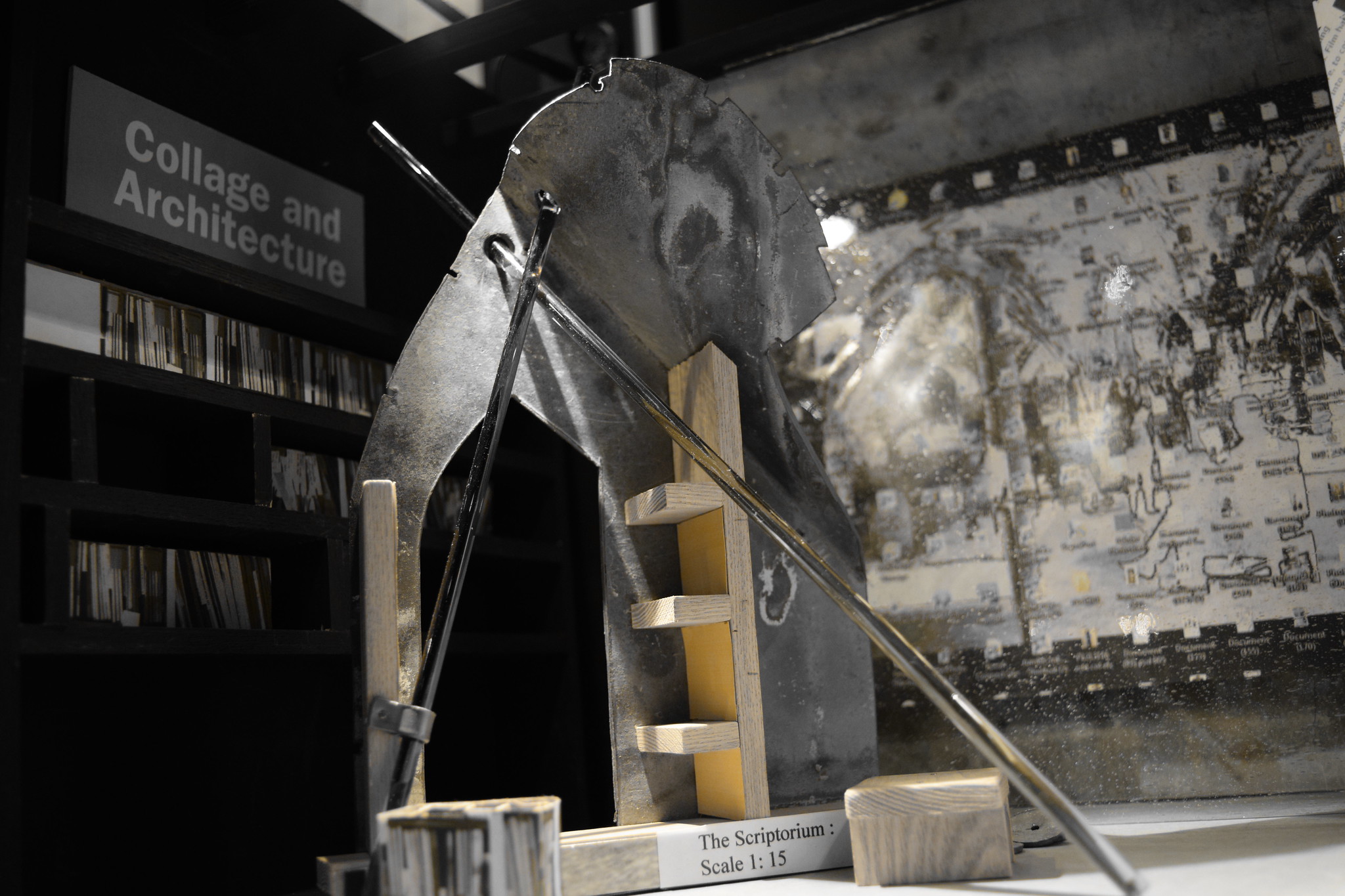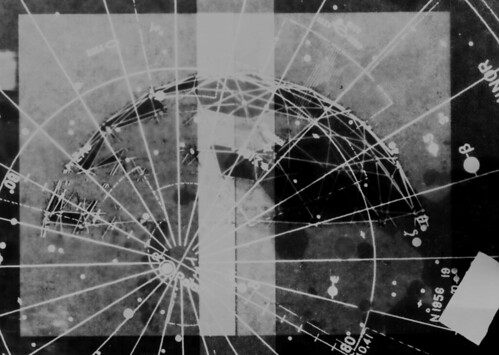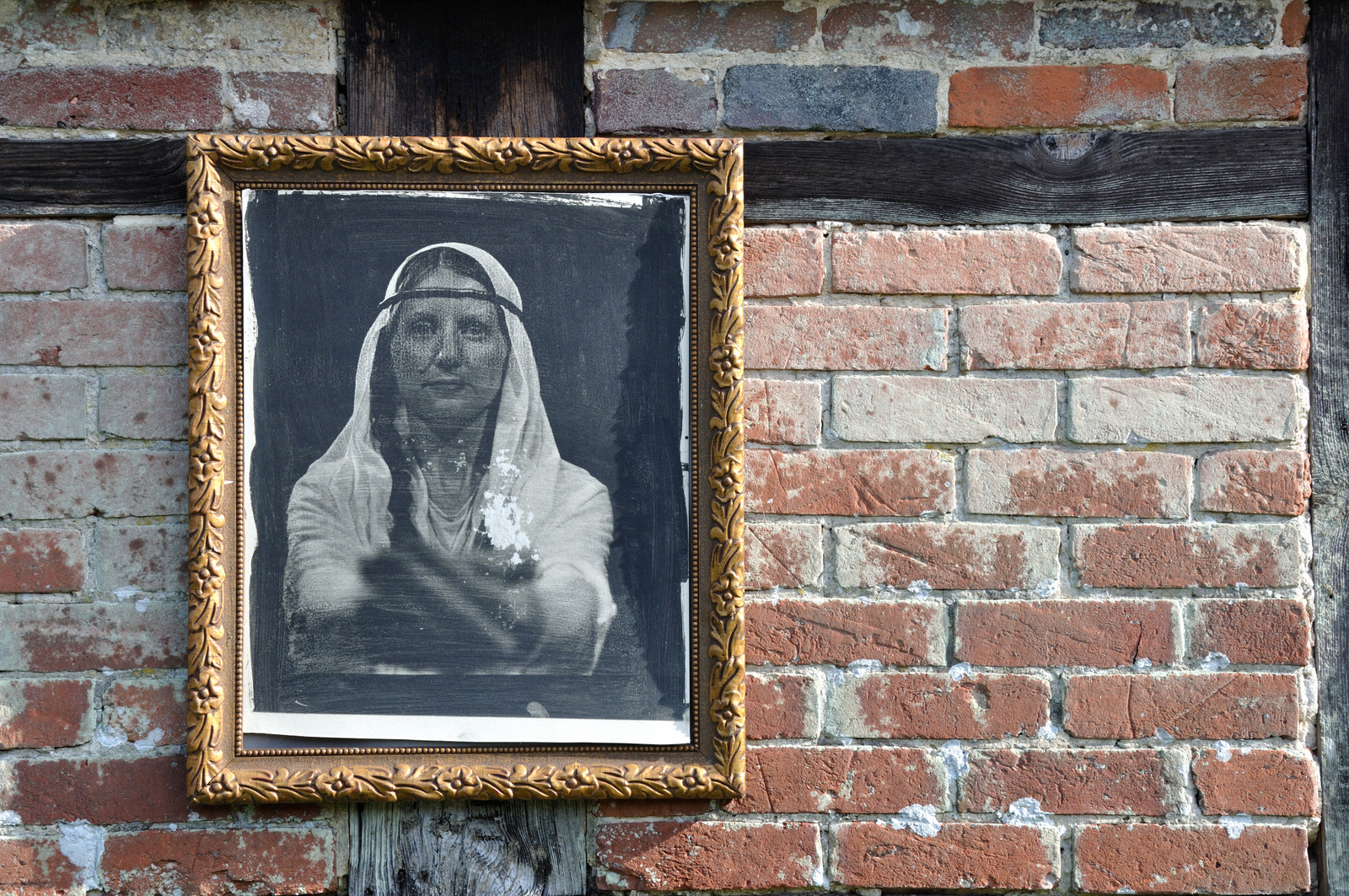Research Explorations :
Creative Humanities
Orange School Graph
Books
Harleston 2020-2021
A Species of Spaces
The Social Turn
Museum Site and Display
Political Philosophy
We have all the choice
in the world in terms of products, but very little choice in terms of
the kind of economy within which those things are made, accessed and
used
Whose Economy
Reframing the Debate
After Neoliberalism
Doreen Massey
Other 'material
interventions' and the revaluation of making through strategies of
repair and maintenance
Making Ecological
Politics
A world teeming with
impulsive movements, deviations and many other lively (capacious)
materialities
Influences that
pervade, enable, and disrupt us
All agency is
'distributive' it always depends on the collaboration, cooperation,
or interactive interference of many bodies and forces
Vibrant Matter, Jane
Bennett
Makers work in a world
that does not stand still
Iteration allows for
continual correction (material conversation) in response to an
ongoing perceptual monitoring of the task as it unfolds, mixing the
potential for blending or combining matter that already exists into
new combinations
Tim Ingold 2010
Making is central to
who we are as individuals, what we make as part of everyday practice
forms our identities and place in the world
The mundane experience
of making, and thus of labour, is resolutely political, a
geographical imperative, and a critical means of operating a
meaningful relationship with this material life
The Quarry as Sculpture
: The Place of Making
D A Paton 2013
The making of a
building does not stop when the building work is (temporarily)
finished. But only really begins upon occupation, when the work
commences of maintaining the buildings integrity against an onslaught
of wilfully destructive elements, insects, rodents, fungal
infestations, corrosion, damp, harsh sun, water, wind
Evocative Thoughts on
Building, Alvaro Siza
The social life of
making
Making good is about
maintaining continuity with the past, in the face of efforts to
rupture that continuity
The need for repair is
a remorseless and necessary process that keeps society ticking over
Making speaks in vivid
dialogue with two associated themes, material and skill
Creativity involves not
merely a spark of innovation or the execution of artistic
inspiration. But the capacity to respond to unfolding iterations with
materials. To use slowly accrued haptic knowledge to manipulate
processes on the fly, and to judge how to counteract error and seize
opportunities as they evolve
Making becomes a
process of iteration, and a maker works with this iteration
prolifically
Geographies of Making
ReThinking Materials
and Skills for Volatile Futures
The skill to sustain
the life of something through repair and reappropriation
Collecting is an
example or a pre-emptive activity that people who are skilled with
their hands commonly share
Matter and materials
are lively and require attention, materials continue to thwart in
unpredictable ways, decaying and breaking down or wearing or breaking
under force
Vibrant Matter, A
Political Ecology of Things
Jane Bennett 2010
Attending to the
process of making opens up prospects for following the lead of the
material, where the properties of the materials themselves shape the
direction in which making proceeds
Tim Ingold 2010
New Urban Adventures in
Collaboration/Conceptual Ceramics
Ceramic Practice as a
form of research engaged in a process/ecology of inquiry, an
exploration of ideas predicated on and exploiting the characteristics
of clay
The transformation of
the material is a central concern and semiotic significance unfolds
with making
Seeking a symbiotic
relationship between idea and object
Materials are
substances in becoming
Karen Barad
Towards an Ecology of
Materials
Tim Ingold 2012
From the 'objectness'
of things to the material flows and formative processes wherein they
come into being. It means to think of making as a process of growth
or ontogenesis
Materials-Centered
Perspective
Making, almost defies
precise definition
The composition and/or
manipulation of materials that bring into being new or revised
objects
Tim Ingold 2010
Cultures of thrift and
scavenging, maintenance and repair
Making encompasses the
ingenuity of fluid, locally situated and adapted technologies
Materials carry on
overtaking the formal destinations that, at one time or another, have
been assigned to them
Sensibilities and
dispositions that are centred on a deep and considered relationship
with materials
The Craftsman, Richard
Sennett 2008
Crafting, often
reconnects mind and body in the sites and processes of production,
thereby potentially reconstituting labour processes in ways that
ascribe agency to workers
Makers finding ways to
resist norms of gender and neoliberal entrepreneurial subjectivities,
finding ways and spaces for ethical practice to predominate
Contemporary conceptual
ceramics operates at the permeable boundary between art and craft,
partaking of aspects of both, and ultimately demonstrating (or
performing) that permeability
The emergence of the
museum as proactive laboratory of social evolution
Extradisciplinary
Investigations/Operative Principle
At work here is a new
tropism and a new sort of reflexivity, involving artists as well as
theorists and activists in a passage beyond the limits traditionally
assigned to their practice
Microtopias, small
contained sites of functioning democracy
Tropism conveys the
desire or need to turn towards something else, towards an exterior
field or discipline
The New Institutional
Practice
Projective Enterprises
(should unsettle, activate, and raise questions)
The exhibitions to
emerge through new institutionalism are considered as points of
exchange and collision, made through intersections of social,
economic and political relations, it follows that the predominant
forms of artistic practice included are the social, the spatial, the
interdisciplinary
So our understanding of
site has shifted from a fixed , physical location to somewhere or
something constituted through social-economic-cultural and political
processes
Site-Specific Art and
Locational Identity
Miwon Kwon 2002
Collaborations and its
Discontents
Claire Bishop 2006
The motivating factors
for participatory projects is its critiquing of the essentialising of
site and community in context-specific activities/exhibitions
A complex environment,
awash in affect and subjectivity
When subjective and
analytic processes mesh together to form a new productive and
political 'contexts' of communicational labour
New curatorial
initiatives must unpack the terminologies we use to distinguish one
project from another
A playful
psychogeographical situation, that resists the representative,
illustrative and thematic narratives
Unsettling-Complicit
Provocative-Strategic
Interventionist-Collaborative
Perforative
Curating/Prescribed Participation
Creating new/more coded
patterns of behavior/conventions/role play for visitor's
New Institionalism and
the Exhibition As Situation/Social Experiment
Claire Doherty 2006
Participation
In which people
constitute the central artistic medium and material
In the manner of
theatre and performance
Participatory art is
both a social activity and a symbolic one, as it is both embedded in
the world and at one, remove from it
The artist is conceived
less as an individual producer of discrete objects, than as a
collaborator and producer of situations
The contemporary
artwork is finite, portable, commodifiable product, and is
reconceived as an ongoing or long term project with an unclear
beginning and end
Artists are more
interested in the creative rewards of participation as a politicised
working process, than the relational aesthetic which renders
discursive and dialogic projects more amenable to museums and
galleries
Artificial Hells
(exposing the political and aesthetic limitations in the work)
Participatory Art and
the Politics of Spectatorship
Claire Bishop 2011
Site-Specificity/Spatial
Practice
The distinguishing
characteristic of today's site-oriented art is the way in which both
the art work's relationship to the actuality of a location (as site)
and the social conditions of the institutional frame (as site) are
subordinated to a discursively determined site that is delineated as
a field of knowledge, intellectual exchange or cultural debate
Miwon Kwon 1997
Whilst temporary
exhibitions can expand the scope of medium-specific discourse, they
can also impose alternative, but equally restrictive frames
Participation, creating
a bridge between socially engaged practice and the permanent
collection
Expressing itself
expressing
Creating a conceptual
and linguistic dexterity between absolutes, certainties, definitions
Dissolving the
intellectual relevance, with its symbiotic relationship with utility
to create 'vessels' beyond art and artifact
The strategy of making
artworks as response
The Ceramic Object, by
means of preservation and display becomes a vehicle/vessel for a
social and historical narrative/entanglement/engagement
Making vessels, beyond
the examining and intellectually impoverished questions
A vessel is identified
as such by its physical disposition, giving shape to the contents and
clarifying what is inside and what is outside
Few boundaries are
impenetrable
They are rather,
semi-permeable membranes providing housing while allowing selective
commerce
Like the vessel, the
house shapes and nurtures the life contained inside
The Factory I build in
the Tate is a place to discuss the transactions and transformations
of Labour that Create Knowledge and Community
In the Factory we will
examine skills and how we form Exchanges at Work , with ourselves and
with others
Clare Twomey, Lead
artist at Tate Exchange 2017
Post Studio Ceramics
Interfaces between
Making-Makers-Museums
Exploring object
engagement beyond the known historical models of clay practice
'Generate' Historical
Material and Spatial Relations as they interacted with the work, and
reflected on the role of the Museum/Hospital
Clare Twomey
Ceramics In The
Environment
An International Review
Janet Mansfield 2005
With Fire, Richard
Hirsch
A Life Between Chance
and Design (invites the unknown)
Scott Meyer 2012
Hirsch takes us to the
heart of the interface between ageless earth and the spare evidence
of the rhythm of human utility
Raku as an Ideology
Breath-Energy-Immanence
Raku, A Review of
Contemporary Work
Tim Andrews 1994
The Poetry of The
Vessel
A calm invitation to
thought and imagination
Chris Tyler
Choreographing
Events and Demolition
Trace and Encounter
Brian Massumi refers to
all arts as 'occurrent' because any and every perception, artefactual
or natural is just an experiential event
It is an event both in
the sense that it is happening, and in the sense that when it happens
something new transpires
Semblance and Event,
Activist Philisophy and the Occurrent Arts
Brian Massumi 2011
The vessel (making,
thinking, subject) as both a historically grounded form, and a
vehicle to examine abstract aspects of the physical body and the
natural world
Making new aesthetic
utilities, materialities/modalities for thinking about the world
Frames, Handles and
Landscapes
Georg Simmel and the
Aesthetic Ecology of Things
Eduardo de la Fuente
2016
Simmel, ecological
approaches to aesthetics, shares the insight of ecological thinkers
regarding how aesthetic perception is not reducible to either the
internal mechanisms of the perceiving subject nor to the properties
of the external environment, but rather the complex interplay of both
Materiality in art that
attempts to expand notions of time, space, process or participation.
Looking at materials that obstruct, disrupt or interfere with social
norms, surfacing as impure formations and messy unstable substances.
Materiality that
surveys the relationships between materiality and bodies, exploring
the vitality of substances and the concepts of intermateriality and
transmateriality that have emerged in the hybrid zones of digital
experimentation
Materiality, Whitchapel
2015
Arte Povera/Germano
Celant, an aesthetic-philosophical movement
An eclectic synthesis
of knowledge fields, that emerges into a total space where disparate
categories can meet; a art that asks only for the essential
information, that refuses the dialogue with the social and cultural
system, and aspires to present itself as something sudden and
unforeseen
Artisanal,
pre-industrial trades, firmly rooted in context, often evocatively
sketching out the relations between material and place
Dispositions that open
possibilities, experimental alternatives opened up by small scale non
capitalist and self provisioning crafting
Making is central to
our legacy as a society, materially, economically, ecologically and
socially
In the small-scale
culture of domestic craft enterprise, there is a rapidly expanding,
fetishized and globally networked economy, premised on continued
consumption of stuff
Idea is, the invisible
of this world, which inhabits this world, sustains it, and renders it
visible
Merleau Ponty
For Steven Holl, the
intertwining of idea and phenomena occurs with the realization of a
building as the means for the materialization of the idea force
A methodology of
connecting phenomenal properties with a conceptual strategy
Responds to every
project by re-evaluating the physical, cultural, historical
references of the site-time or program, through which he achieves a
'limited concept' that establishes an order, a field of inquiry, a
limited principle for each architectural design process
As the body-subject is
perceptually situated into the world by inhabiting space and time, a
building is rooted into a specific site and situated by inhabiting,
'the visible and invisible of the site and situation'
By locating the body,
'at the very essence of our being and our spatial perception' Holl
redefines architectural space as perceived space with reference to
the perceiving-body-subject
Steven Holl uses
'parallax' as an experiential tool as well as a design tool in which
architectural space is redefined with reference to the moving body's
constantly changing spatial perceptions
Merleau Ponty's main
thesis that phenomenology has potential to put the essences back into
existence by re-achieving a direct and primitive contact with the
world through the realm of perceptual experiences drives Steven Holl
to search for vitalizing these essences through the experiences of
architectural forms, spaces, materials, light and colour
Intellectual and
Phenomenal
Philosophical Inquiry
Interplays in his
thinking on and making of architecture
Utility/Interpretation
Bachelard's Poetics of
Space, explores the essence of being as it resides in the perceptual
situadedness of the body-subject into the world
Perception
fundamentally 'acts' enabling human beings to inhabit space and time
When the body-subject
gains access into the world through perception, the world becomes,
what we perceive
Architecture
That which begins as an
interaction with the formation of an abstract idea, the formation of
a concept out of this idea and its transformation into a material, a
spatial and formal reality on a physical site
Creating the
experiential power of architecture
Intertwining,
idea-space-material
Anchoring, physics and
metaphysics of site
A path of passage in
architecture that leads from the abstract to the concrete, the
unformed to the formed. An architectural journey in which the
idea-force, phenomenal properties and the site force interact with
each other
Frames Handles and
Landscapes
Gibson's theory of
affordances
Behavioral complexities
of affordances, grow exponentially through the production of tools,
utensils, weapons. Are our aesthetic sensations therefore determined
by the environment or do we impose qualities through observation,
sensation and perception.
Affordance points in
both directions at the same time
Substances also guide
the kind of practical actions that the organism senses from elements
of the environment, something flat, vertical, convex, concave, rigid,
flexible, determines whether something affords support
Art and Aesthetic
Patterns
An Ecology of Mind
We are so accustomed to
thinking of aesthetic phenomena as a discursive or representational
construct, that we often forget that without arousal of perception,
no aesthetic experience is possible.
Going beyond what it
may represent into the important psychic information it contains
Bateson credits art
with playing the role of confronting the quantitative limit built
into consciousnesses
Art assists mind in
recognizing that the potentiality of heightened consciousnesses exist
and that it resides in you and in me
Fittingness/Ecological
Approaches to Aesthetic Perception
Colour, Light, Time:
Quintessentially relational phenomena in which location, background,
density will provide different perceptual relations
Steven Holl
Symmetry appeals
because symmetrical patterning provides for the observing mind a
maximum of insight with a minimum of intellectual effort,
quintessentially relational phenomena ( colour, light, time) and
location, provide a background density that will provide for
different perceptual relations
Relatedness, connected
to the place and function of things within a field
The rational
organization of society has its own aesthetic attraction
Redundancy is a synonym
for patterning
A pattern is a method
for coping with the redundancies of messages emanating from the
environment
Patterning of message
material always helps the receiver to differentiate between signal
and noise
Bateson 1973
Elaborations (Dynamic
aesthetic totalities) of such everyday patternings in Art, Music,
Ballet, Poetry
Initiating causal
consequences, agency as persons and things
Camouflage takes away
the ability to block out the irrelevant things in the environment,
thus camouflage (which is designed to subvert communication) achieves
its aims by breaking up the patterns and regularities in the signal,
or by introducing similar patterns into the noise.
But what unambiguous
codes gain in noise reduction, they lose in richness and
expressiveness
Somewhere in between is
the effective use of redundancy in which the blocking out of
redundancies paradoxically heightens our attention to what is
important
Frames, Handles and
Landscapes
Simmel 1965
A tools beauty springs
from the many unintended and absolute causalities, instead of being a
materialization of an aesthetic idea
The Thinking Hand
Pallasmaa
Affordances provide
strong clues to the operations of things
Gibson
A psychology of
causality is at work as we use everyday things
Donald Norman 2002
Perception of
Environment/Relational Situations
Tim Ingold
Each thing framed
dwells in the world differently
The frame and framing,
through its configuration, must never offer a gap or a bridge through
which as it were, the world could get in, or from which the picture
could get out
The picture frame
reminds us that the work of art, while it hangs in our room, does not
disturb our day-to-day sentient and perceptual ecologies
It is like an island in
the world that waits until one approaches it and which one can as
well pass by and overlook
On The Picture Frame,
Simmel
Art becomes art by
virtue of literal and institutional framing
Aesthetic contemplation
blurs reals and emotional space in a way that produces tangible
affects in the world
The thinking hand that
mediates a haptic bridge in which creating and holding, becoming and
grasping are all practical everyday activities extending the thinking
body
Objects that stand in
two worlds at once and becoming drawn into the movement of practical
life through the virtue of being held in the hand
The intermingling of
persons and objects in pictorial space and the aesthetics of the
intermingling of function and form in everyday things
The pictorial space is
one in which persons and images intermingle and passions can be
aroused
Gell


















































